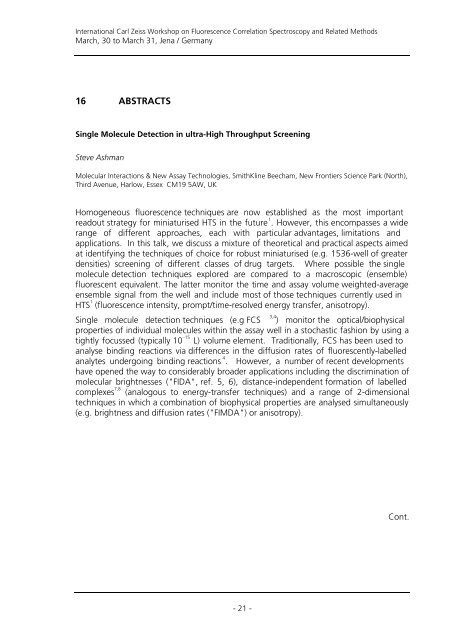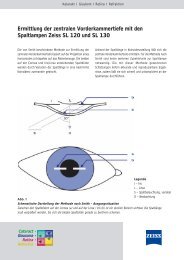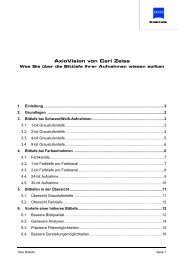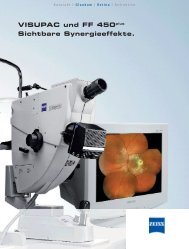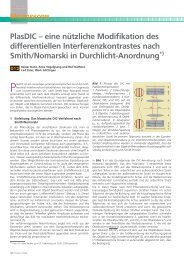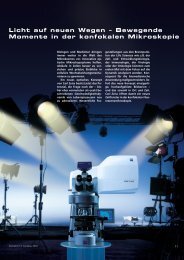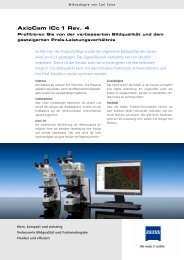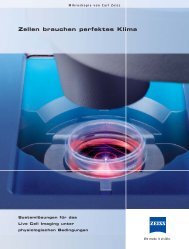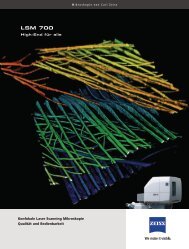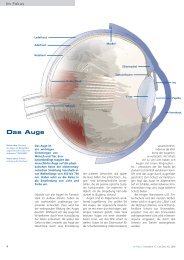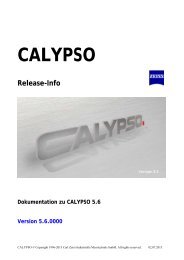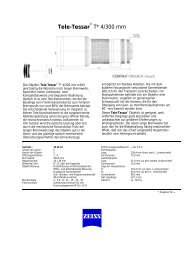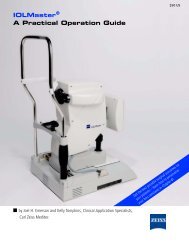International Carl Zeiss Workshop on International Carl Zeiss ...
International Carl Zeiss Workshop on International Carl Zeiss ...
International Carl Zeiss Workshop on International Carl Zeiss ...
Create successful ePaper yourself
Turn your PDF publications into a flip-book with our unique Google optimized e-Paper software.
<str<strong>on</strong>g>Internati<strong>on</strong>al</str<strong>on</strong>g> <str<strong>on</strong>g>Carl</str<strong>on</strong>g> <str<strong>on</strong>g>Zeiss</str<strong>on</strong>g> <str<strong>on</strong>g>Workshop</str<strong>on</strong>g> <strong>on</strong> Fluorescence Correlati<strong>on</strong> Spectroscopy and Related Methods<br />
March, 30 to March 31, Jena / Germany<br />
16 ABSTRACTS<br />
Single Molecule Detecti<strong>on</strong> in ultra-High Throughput Screening<br />
Steve Ashman<br />
Molecular Interacti<strong>on</strong>s & New Assay Technologies, SmithKline Beecham, New Fr<strong>on</strong>tiers Science Park (North),<br />
Third Avenue, Harlow, Essex CM19 5AW, UK<br />
Homogeneous fluorescence techniques are now established as the most important<br />
readout strategy for miniaturised HTS in the future 1 . However, this encompasses a wide<br />
range of different approaches, each with particular advantages, limitati<strong>on</strong>s and<br />
applicati<strong>on</strong>s. In this talk, we discuss a mixture of theoretical and practical aspects aimed<br />
at identifying the techniques of choice for robust miniaturised (e.g. 1536-well of greater<br />
densities) screening of different classes of drug targets. Where possible the single<br />
molecule detecti<strong>on</strong> techniques explored are compared to a macroscopic (ensemble)<br />
fluorescent equivalent. The latter m<strong>on</strong>itor the time and assay volume weighted-average<br />
ensemble signal from the well and include most of those techniques currently used in<br />
HTS 1 (fluorescence intensity, prompt/time-resolved energy transfer, anisotropy).<br />
3,4<br />
Single molecule detecti<strong>on</strong> techniques (e.g FCS ) m<strong>on</strong>itor the optical/biophysical<br />
properties of individual molecules within the assay well in a stochastic fashi<strong>on</strong> by using a<br />
tightly focussed (typically 10 -15<br />
L) volume element. Traditi<strong>on</strong>ally, FCS has been used to<br />
analyse binding reacti<strong>on</strong>s via differences in the diffusi<strong>on</strong> rates of fluorescently-labelled<br />
analytes undergoing binding reacti<strong>on</strong>s 4 . However, a number of recent developments<br />
have opened the way to c<strong>on</strong>siderably broader applicati<strong>on</strong>s including the discriminati<strong>on</strong> of<br />
molecular brightnesses ("FIDA", ref. 5, 6), distance-independent formati<strong>on</strong> of labelled<br />
complexes 7,8<br />
(analogous to energy-transfer techniques) and a range of 2-dimensi<strong>on</strong>al<br />
techniques in which a combinati<strong>on</strong> of biophysical properties are analysed simultaneously<br />
(e.g. brightness and diffusi<strong>on</strong> rates ("FIMDA") or anisotropy).<br />
C<strong>on</strong>t.<br />
- 21 -


